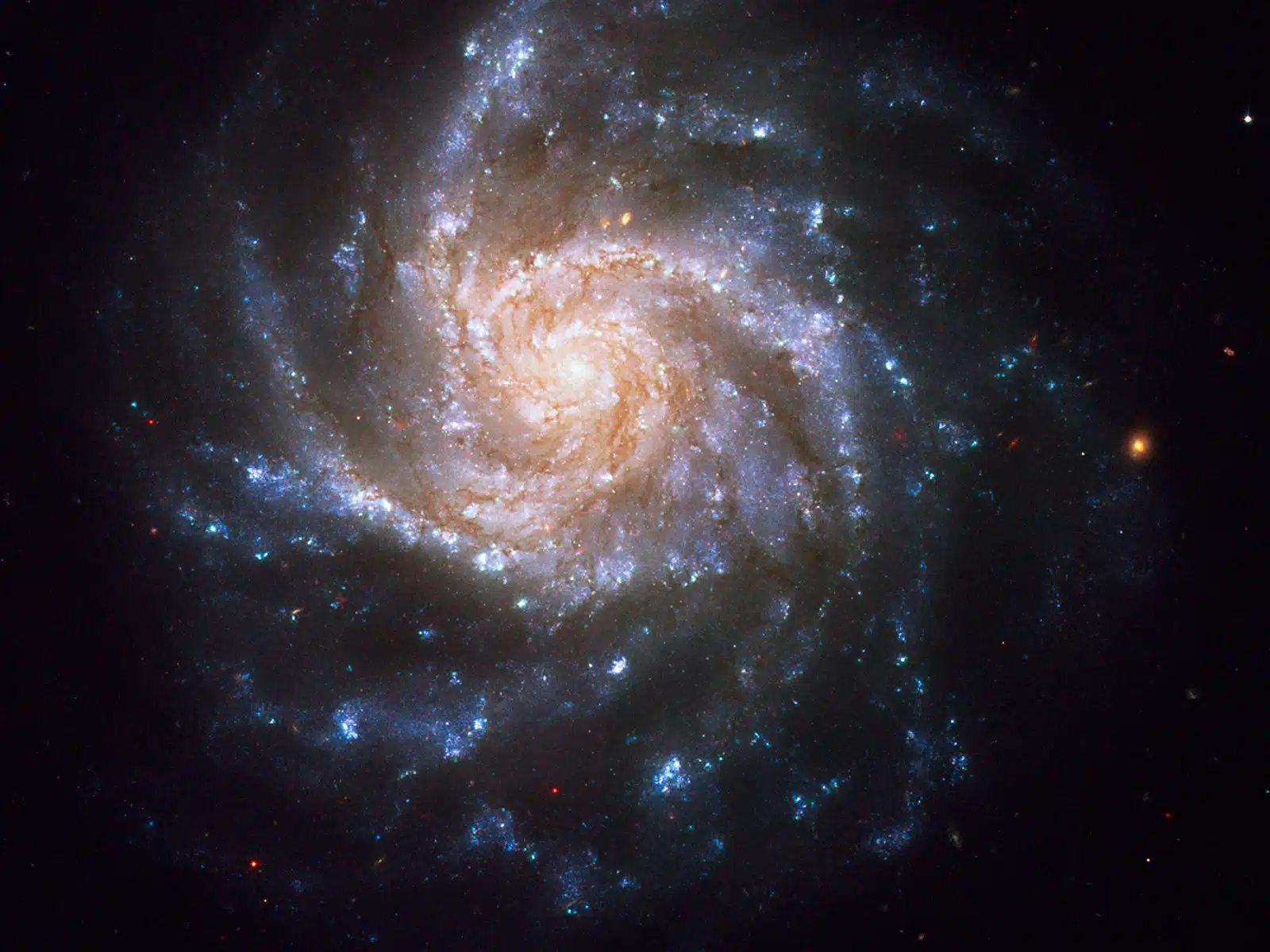About Spiral Galaxy:
- Spiral galaxies are twisted collections of stars and gas that often have beautiful shapes and are made up of hot, young stars.
- In a spiral galaxy, the stars, gas, and dust are gathered in spiral arms that spread outward from the galaxy’s center.
- Most of the galaxies that scientists have discovered so far are spiral galaxies, as opposed to the other two main categories of galaxy shapes—elliptical and irregular.
- Approximately 60% of all galaxies are thought to be spiral galaxies.
- The Milky Way, the galaxy that includes Earth and our solar system, is an example of a spiral galaxy.
- Structure:
- Most spiral galaxies contain a central bulge surrounded by a flat, rotating disk of stars.
- The bulge in the center is made up of older, dimmer stars and is thought to contain a supermassive black hole.
- Approximately two-thirds of spiral galaxies also contain a bar structure through their center, as does the Milky Way.
- The disk of stars orbiting the bulge separates into arms that circle the galaxy.
- These spiral arms contain a wealth of gas and dust and younger stars that shine brightly before their quick demise.
- The majority of spiral galaxies rotate in the sense that the arms trail the direction of the spin.
- The visible portion of spiral galaxies contains only a small fraction of the total mass of the galaxy, and that spiral galaxies are surrounded by an extensive haloconsisting mostly of dark matter.
- Spiral galaxies are thought to evolve into elliptical galaxies as the spirals get older.
Q1: What is a Black Hole?
A black hole is a region in space where gravity pulls so much that even light cannot get out. The gravity is so strong because matter has been squeezed into a tiny space. This can happen when a star is dying. Because no light can get out, it is difficult to detect a black hole. The largest black holes are called “supermassive.” These black holes have masses that are more than 1 million suns together.
Last updated on June, 2025
→ UPSC Notification 2025 was released on 22nd January 2025.
→ UPSC Prelims Result 2025 is out now for the CSE held on 25 May 2025.
→ UPSC Prelims Question Paper 2025 and Unofficial Prelims Answer Key 2025 are available now.
→ UPSC Calendar 2026 is released on 15th May, 2025.
→ The UPSC Vacancy 2025 were released 1129, out of which 979 were for UPSC CSE and remaining 150 are for UPSC IFoS.
→ UPSC Mains 2025 will be conducted on 22nd August 2025.
→ UPSC Prelims 2026 will be conducted on 24th May, 2026 & UPSC Mains 2026 will be conducted on 21st August 2026.
→ The UPSC Selection Process is of 3 stages-Prelims, Mains and Interview.
→ UPSC Result 2024 is released with latest UPSC Marksheet 2024. Check Now!
→ UPSC Toppers List 2024 is released now. Shakti Dubey is UPSC AIR 1 2024 Topper.
→ Also check Best IAS Coaching in Delhi
























